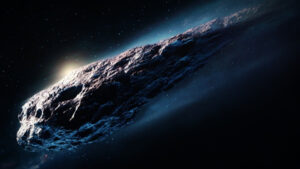
DTEK Energy’s machine builders manufactured over 3,000 pieces of mining equipment in January-November this year, including eight new roadheaders, one mine fan, and 10 electric motors, according to the company’s press release.
In addition, over 2.2 million spare parts and components were manufactured during this period.
“We are all working towards one goal – to get through this, already the fourth, winter of war. Ukrainian machine builders are also working hard to meet the equipment needs of Ukrainian mines. This is our stability, first and foremost, during the heating season,” said DTEK Energy CEO Oleksandr Fomenko in the statement.
As reported, since the beginning of 2025, DTEK Energy has invested UAH 6.1 billion in Ukrainian coal mining. In 2024, investments in Ukrainian mines amounted to about UAH 7.5 billion, and over the past three years (2022-2024) – more than UAH 18 billion.
DTEK Energy provides a closed cycle of electricity production from coal. As of January 2022, the company’s installed thermal generation capacity was 13.3 GW. A complete production cycle has been created in coal mining: coal extraction and enrichment, machine building, and maintenance of mining equipment.
The DTEK Group is the largest private investor in Ukraine’s energy sector, with 55,000 employees and more than EUR 12 billion of capital invested since 2005. It is wholly owned by SCM Holdings, with Rinat Akhmetov as the ultimate beneficiary and sole shareholder.

The agricultural enterprise Zemlya i Volya LLC (Chernihiv region) reported an increase in information attacks and “black PR” against the company and the family of its late founder Leonid Yakovishin, according to the Chernihiv information portal CHE.CN.UA following a meeting of the workforce.
Acting CEO Valentina Chernyakova reported that the farm had completed seasonal work on time and prepared the land for the next season. “The first thing I want to do is thank the entire workforce… for harvesting on time and preparing for next year,” she said.
According to her, since August 2025, the company has increased salaries by 30%, and the average wage is UAH 30,000. Also, as noted in the article, at the beginning of 2026, employees are to receive a “thirteenth salary.”
First Deputy Director General Vasyl Nesteruk said that the season was difficult due to weather conditions and high corn moisture content, which increased drying costs. According to him, the farm spent about UAH 130 million on natural gas for drying corn and also purchased three generators costing UAH 8 million each. “Despite the difficulties, we have completed all the tasks set before the team and are ready for the next harvest,” Nesteruk said.
At the meeting, the management also announced its intention to increase the rent for land, the amount of which will depend on the regulatory monetary valuation, and to settle accounts with landlords by the end of December, as stipulated in the contracts.
Commenting on the information attacks, Chernyakova said: “Some people want to come in and reap the rewards… some people want to come in and take over everything that is already ready.” She appealed to the team not to allow such a scenario to happen.
She also said that the company continues to work and assist the military, and that “Leonid Yakovishin’s brainchild… is not for sale.”
Zemlya i Volya LLC (EDRPOU code 30866306) was registered on March 29, 2000, with its main activity being the cultivation of grains and oilseeds.
According to the company, it cultivates 32.5 thousand hectares of arable land, with corn as the key crop (92.5% of the sown area), as well as wheat, barley, and other crops; its areas of activity include crop production, livestock farming, and processing.
According to Opendatabot, the company’s revenue in 2024 was UAH 2.677 billion, net profit was UAH 803.7 million, assets were UAH 3.782 billion, liabilities were UAH 458.8 million, and the number of employees was 1,200.

Shareholders of IC “VUSO” (Kyiv) at the meeting from December 4 to 9 have decided to allocate UAH 20.013 mln of confirmed retained earnings for 2024 to dividends.
As the company reported in the information disclosure system of the National Commission on Securities and Stock Market (NCSSM), the rest of the profit for 2024 in the amount of 98.811 mln is planned to be left undistributed.
The company also reports that dividend payments will be made at the rate of UAH 0.73 per share. Payment of dividends will be made in full directly to shareholders in the manner prescribed by law within six months from the date of adoption of the relevant decision by the general meeting of shareholders.
As reported, the company’s net confirmed retained earnings for 2024 amount to UAH 118.824 mln.
The company in 2024 collected UAH 3.462 billion of gross premiums, which is 29.3% more than for 2023, net premiums increased by 25.55% to UAH 3.105 billion and net earned premiums by 15.83% to UAH 2.737 billion.
IC “VUSO” for 2024 has paid out UAH 1,414 billion to clients, that is by 45,40% higher than the volume of insurance payments and indemnities for 2023. Thus, the level of payouts has increased by 4,52 percentage points – up to 40,85%.
Assets of the insurer as of January 1, 2025 have grown by 25,76% – to UAH 1,917 billion, shareholders’ equity – by 22,45% – to UAH 755,839 million, liabilities – by 28,01% – to UAH 1,161 billion, cash and cash equivalents – by 36,09% – to UAH 758,730 million.
IC “VUSO” was founded in 2001. It is a member of ITSBU and UFS, a participant of the Agreement on direct settlement of losses and a member of the Nuclear Insurance Pool.

Interstellar object 3I/ATLAS, also designated comet C/2025 N1 (ATLAS), did not “disappear,” but became difficult to observe for several weeks due to its geometry: after a period of visibility for ground-based telescopes, it passed too close to the Sun in the sky, and then reappeared “on the other side of the Sun,” opening a new window for observation.
As noted by NASA and the European Space Agency (ESA), 3I/ATLAS is the third confirmed interstellar object discovered in the Solar System, after Oumuamua (2017) and 2I/Borisov (2019).
The comet was first recorded on July 1, 2025, by the ATLAS system in Chile.
The closest approach of 3I/ATLAS to Earth is expected on December 19, 2025, at a distance of about 270 million km (approximately 1.8 AU). ESA separately emphasizes that at the moment of maximum approach, the object will be on the other side of the Sun relative to Earth and will not pose a threat to the planet.
The key “latest” scientific highlights are related not so much to the trajectory as to the physics of the comet. According to ESA, James Webb’s observations have already detected a set of components typical for comets in the coma, including water and carbon-containing compounds, and in late November-early December, the XRISM and XMM-Newton X-ray observatories registered diffuse X-ray glow around the nucleus – ESA calls 3I/ATLAS the first interstellar comet observed in the X-ray range.
A separate line of discussion in scientific popularization concerns “anomalies” such as non-gravitational acceleration and the unusual structure of the tail. Some studies interpret this as a normal consequence of gas and dust ejection (outgassing), which creates a small reactive thrust – these effects are characteristic of active comets and are used in models of their motion.
3I/ATLAS is an interstellar active comet discovered on July 1, 2025. According to ESA data, its perihelion (maximum approach to the Sun) occurred on October 29, 2025, and its closest approach to Earth was on December 19, 2025. NASA estimates the upper limit of the nucleus diameter to be 5.6 km, although the actual size may be significantly smaller.

The leadership of the Ukrainian Red Cross (URC), the chairman of the board of ArcelorMittal, and representatives of the Luxembourg Red Cross discussed the issue of attracting resources for the implementation of joint humanitarian projects.
“During a working visit to Luxembourg, I met with Michel Würth, Chairman of the Board of ArcelorMittal, and representatives of the Luxembourg Red Cross at ArcelorMittal’s headquarters. We discussed opportunities for future cooperation in Ukraine and attracting resources for joint humanitarian and research initiatives,” UKK CEO Maxim Dotsenko said on Facebook on Thursday.
According to Dotsenko, for the Ukrainian Red Cross, international partnerships are about trust, shared responsibility, and real support for people affected by the war.
“It is thanks to such interactions that we can strengthen our assistance where it is most needed,” Dotsenko said.

The cost of 12 lean dishes for the 2025 Christmas table is 913.57 UAH, which is 11% more than last year, according to the Ukrainian Agribusiness Club (UACB)
“Food prices on the eve of the Christmas holidays show mixed trends: thanks to a record drop in vegetable prices, the cost of some traditional dishes has decreased, but the total cost of the Christmas table has increased due to the rise in prices for fruit, fish, and groceries,” the association explained.
Analysts noted that a distinctive feature of this winter season was “vegetable deflation.” Thanks to a good harvest, prices for vegetables used in borscht have fallen significantly: cabbage has fallen in price by 73%, carrots by 63%, onions by 58%, potatoes by 54%, and beets by 51%. This has led to significant savings in the preparation of dishes such as cabbage dumplings (their cost has fallen by 47%), potatoes with garlic (-40%), and vinaigrette (-18%). Even lean borscht will cost 18% less this year than last year.
At the same time, the main symbols of the Christmas table – kutia and uzvar – have noticeably increased in price, according to the UACB. The kutia index rose by 37%. This is due to the rise in prices of all its components: nuts jumped in price by 60%, honey by 40%, and poppy seeds and raisins by more than 30%. The ingredients for uzvar led the way in terms of price growth: prunes rose in price by 168%, dried pears by 140%, and apples by 110%, which led to a 150% increase in the price of the drink.
Fish dishes also became more expensive: the cost of herring rose by 24%, and fish (hake) for baking – by 25%. In addition, the final cost of dishes is influenced by sunflower oil, which is a basic element of the Lenten table and has risen in price by 22% over the year.
As for meat dishes (for those who do not observe Lent or are already preparing for the New Year), their preparation is more expensive than last year. Baked pork neck will cost 7% more (330 UAH/kg). Lard is outpacing the growth in meat prices – over the year, the product has increased in price by 16% and costs 272 UAH/kg. The cost of meat borscht has increased by 27%, reaching 196 UAH, with pork ribs accounting for over 60% of the price (119.5 UAH per 500 g). Chicken prices are rising due to the increase in feed costs, while pork prices are stabilizing due to imports.
Sliced cheese will be one of the most expensive items on the New Year’s table—700 UAH/kg, which is 40% more than last year. Despite the general trend of declining wholesale prices for raw milk, producers are maintaining high prices for cheese and butter due to expensive energy resources. Eggs, which are essential for Olivier salad, rose by 10% compared to the same period last year and reached 81.6 UAH per dozen, according to the UACB.